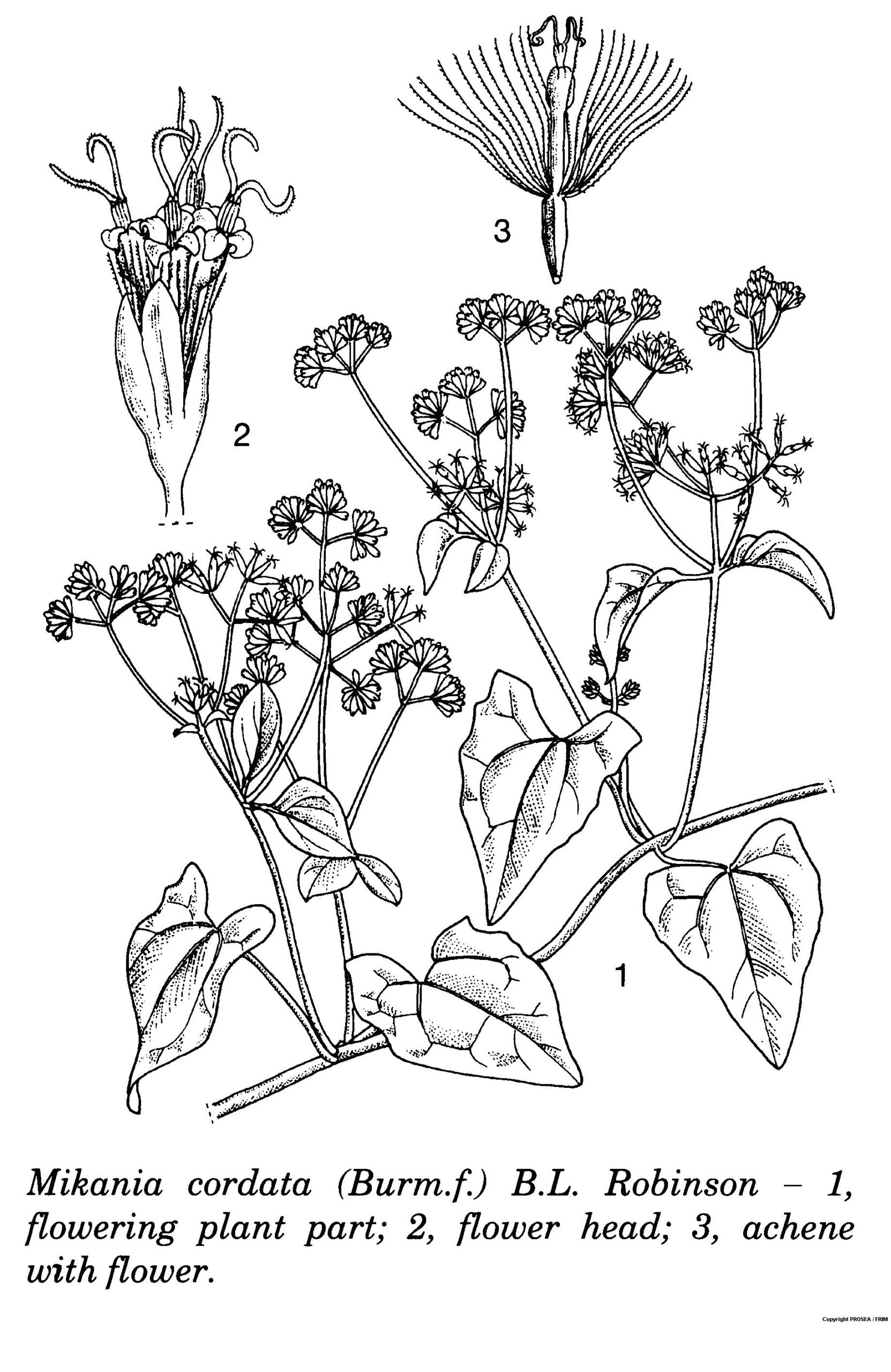Mikania cordata (Burm.f.) B.L. Robinson
Family
Compositae
Synonyms
Eupatorium cordatum Burm.f., Mikania volubilis (Vahl) Willd.
Vernacular Names
| Malaysia | Akar lupang, ceroma, selaput tunggul. |
| English | Mile-a-minute. |
| Indonesia | Brojo lego (Javanese), blukar (Sumatra), hila hitu lama (Ambon). |
| Philippines | Bikas (Bagobo), detidid (Igorot), uoko (Bontok). |
| Thailand | Khikaiyan. |
Geographical Distributions
Most species of Mikania are native to the Americas; the most widely distributed species of Mikania cordata, however, is native to and widespread in Southeast Asia including Hainan and Taiwan.
Description
Mikania cordata is a scandent herb and often forms a dense tangled mass. Its stem is nearly cylindrical or irregularly angular, ribbed and measures up to 6 m x 2-3 mm. The internodes are 8-20 cm long, with thickened nodes and sometimes short hairs. The leaf blade is triangular ovate, measuring 2.5-10 cm x 2.5-7 cm, with cordate or shortly contracted base, with crenate-dentate margin, sinuate or entire, acutely acuminate at apex, nearly hairless and gland-dotted beneath. The petiole is 1-4 cm long.
The inflorescence is composed of peduncled heads that combine into small dense corymbs at the top of short lateral branches and in the axils of the leaves. The peduncle of corymbs is very variable in length. The peduncle of heads is up to 6 mm long. The head measures 6.5-7.5 mm x 1.5-2 mm. The involucral bracts are elliptical-oblong and measure 6 mm long. The petal is 3.5-4 mm long and yellowish-white. The white style branches are 2.5 mm long.
The 1-seeded fruit is 2-3 mm long, glandular and black-brown. The pappus consists of 40-45 bristles, measures 3-4 mm long and it is white to reddish.
Ecology / Cultivation
Mikania cordata is adapted to hot, humid tropical environments with 1500 mm or more annual rainfall and plenty of sunlight, at altitudes ranging from sea level to 1600 m. Hence, it is commonly found in young secondary jungles, forest clearings, abandoned grounds, secondary regrowth areas, ravines, mountain slopes, roadsides, water courses, fallow lands, low-lying areas along streams and rivers and open plantations. However, it can also persist with reduced vigour in plantations. It may even be found under closed canopies of 4-5-year-old rubber and oil palm, but it is then markedly etiolated and weakened. It is rarely found in plantations of 5-15 years old.
Line Drawing / Photograph

References
- Plant Resources of South-East Asia No.11: Auxiliary plants.


